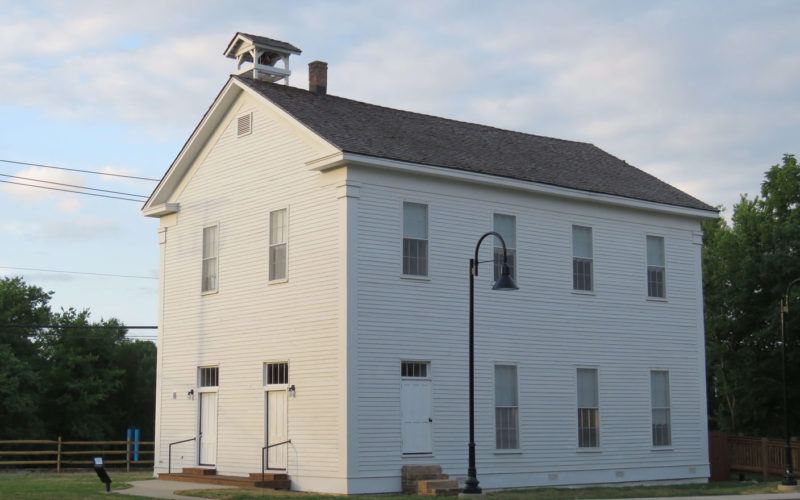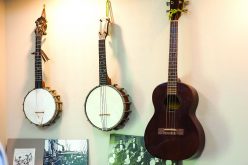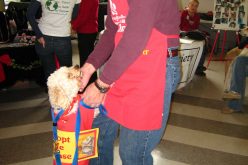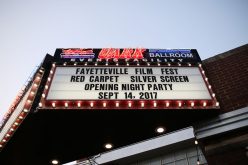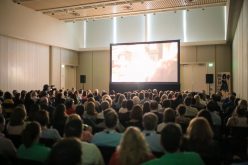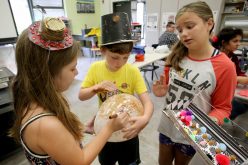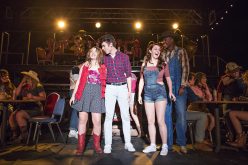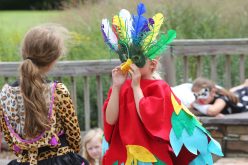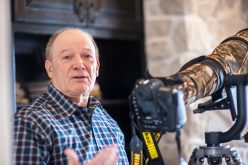Shiloh Meeting Hall ready to get busy
BECCA MARTIN-BROWN
bmartin@nwadg.com
Even its greatest admirers admit that the newly refurbished Shiloh Meeting Hall is “elegant in its simplicity.” In other words, the white-washed two-story structure doesn’t have wrap-around plantation porches or gingerbread trim, no stonework, no brickwork, no rolling green lawns and no majestic hill to perch on.
But the building long known as the Odd Fellows Hall, constructed in 1871 at a cost of $973.43, has a lot going for it besides superficial austerity. Allyn Lord, director of the Shiloh Museum of Ozark History, enumerates:
It’s the most historically significant structure in Springdale and the oldest public building in the region. (There are almost two dozen older buildings in Northwest Arkansas, she adds, but they were all for private use.)
Its 1871 construction happened four years prior to Old Main at the University of Arkansas in Fayetteville and Hot Springs’ grand Arlington Hotel.
The building’s lumber came from the historic Van Winkle Mill near War Eagle.
Two of the three churches that shared its construction still exist: Cross Church, descendant of the Shiloh Regular Baptist Church, and First United Methodist Church, descendant of the Methodist Episcopal Church.
It served for 40 years as home to the local Masonic Lodge and for 70 years as home to the New Era Lodge of the Independent Order of Odd Fellows (IOOF) and its women’s auxiliary, the Rebekah Lodge No. 28.
And as the home of the Women’s Civic Club at the turn of the 20th century, the hall is inextricably linked to good works in Springdale, from the first street lights on Emma Avenue to raising funds for the city’s first public library.
“It was the Odd Fellows who saved the building through most of the 20th century, including the era when urban renewal took out so many other old buildings,” Lord says. “Today it still stands [surrounded by] the echoes of a time when community and service really mattered.”
Its continued prominence in the community is assured, she adds, because it will once again be used as a gathering place “dedicated to hosting meetings and events, just as it was used by the churches and civic groups which occupied the building over the past almost 150 years.”
The path to Saturday’s grand reopening celebration wasn’t simple or straight, Lord admits, although its history and importance was on the museum’s radar as early as 1978, when it was documented as part of the city’s centennial.
“In the 1980s, museum staff and board members worked with the Odd Fellows to help support their fundraising efforts to preserve the building,” Lord continues the story, “including helping to replace the roof and paint the building.”
Over the years, as the lodge’s membership declined, the idea of finding a more stable steward for the property began to appeal to its caretakers, and in 2005, the New Era Lodge and the state and national organizations of the IOOF agreed to donate the building to the city of Springdale and, says Lord, “thereby to the Shiloh Museum of Ozark History.”
Lord hopes someday down the road, the hall, removed from the Shiloh campus by a block-long walk along Church Street, will be part of a larger footprint that includes the main museum building, the seven adjacent historic buildings, “grounds for programming and relaxation, some dedicated parking and perhaps an exhibit and education building.”
“That goal is included in both the city’s master plan and the museum’s strategic plan,” she says.

Photo courtesy Shiloh Museum (Washington County Historical Society Collection)
Members of the Shiloh Primitive Baptist Church stand outside the building, circa 1913. The Shiloh Museum of Ozark History will celebrate the renovation of the structure with an open house on Saturday.

Photo courtesy Shiloh Museum (Springdale Odd Fellow and Rebekah Lodges Collection)
Members of the Independent Order of Odd Fellows New Era Lodge No. 36 are pictured in 1940 on the second floor of the Odd Fellows Hall, where historically only IOOF members were allowed. The second floor is where the Shiloh Museum of Ozark History plans future exhibits remembering the use of the building over the years. Only the first floor meeting space will be open to the public on Saturday.
THE PAST
Located on the banks of Spring Creek, the newly rechristened Shiloh Meeting Hall — once the Shiloh Church and later the Odd Fellows Hall — was built as a collaborative effort by the Shiloh Regular Baptist Church (also known as the Shiloh Primitive Baptist Church), Liberty Missionary Baptist Church, the Methodist Episcopal Church South and the Springdale Masonic Lodge No. 316, explains Carolyn Reno, collections manager and assistant director for the museum.
“Land was donated by the Rev. John Holcomb, who was a minister, an elder and an influential member of the Shiloh Church,” she explains. “The church bell installed in the belfry atop the building reportedly came from a Mississippi River steamboat and was brought to Springdale by Joseph Holcomb, son of the Rev. John Holcomb.”
As legend goes, a clapper for the bell was made by the town blacksmith, Richard Lichlyter, from a spent cannonball found on the site of the Civil War Battle of Pea Ridge.
Used downstairs by the churches and upstairs by the Masons until 1928, the building fell into the hands of the city in 1931 because of unpaid taxes. And in 1935, the IOOF bought it for the amount due.
“For the next 70 years, the Odd Fellows and Rebekahs made frequent use of the building,” Reno recounts. “And members occasionally shared the first floor with church groups, school classes and the local Boys’ Club.”
“The Odd Fellows recognized that the building they owned was an important cultural resource,” says Bob Besom, director emeritus of the museum. “They felt a responsibility to take care of it.”
On June 5, 1975, the structure was added to the National Register of Historic Places as the Shiloh Church, and for several years, money for its preservation was raised by an annual beans and cornbread luncheon hosted by the lodge.

Photo courtesy Shiloh Museum (Springdale Odd Fellow and Rebekah Lodges Collection)
The Rebekahs, the women’s auxiliary of the New Era Lodge of the Independent Order of Odd Fellows, celebrate Christmas in 1954.
THE FUTURE
“When you stand in the building and feel its history, look out the windows and imagine a time when Springdale was primarily farmsteads, and know that the building’s occupants helped bring the community to where it is today, you know that this is a tangible piece of the past that would be hard to imagine without the actual structure standing strong and vital,” Lord says.
After Saturday’s festivities, the museum plans to be the hall’s most frequent user, “for education programs and events, board meetings and events and meetings for the history-based organizations which call the museum home,” she says. The hall will also be open for the use of other city departments — the museum is a department of the city of Springdale — and, “Once we get under way, we’ll also use the main floor as a rental space for small to mid-sized public meetings and events.”
Lord says the second floor won’t open for several years, but when it does, it will be an exhibit hall sharing the building’s history.
“The story of the building’s construction will be featured,” she says, “along with its original bell,” plus sections on the churches, the Masons, the Women’s Civic Club, the Odd Fellows and the Rebekahs.
“Is there more to the building than its timeline of occupation and its parts and pieces? Of course there is,” Lord says. “There are hundreds of stories, each weighty with the DNA of the souls who walked its floors, peered out its windows and exemplified the enduring values of faith, service and community.”

